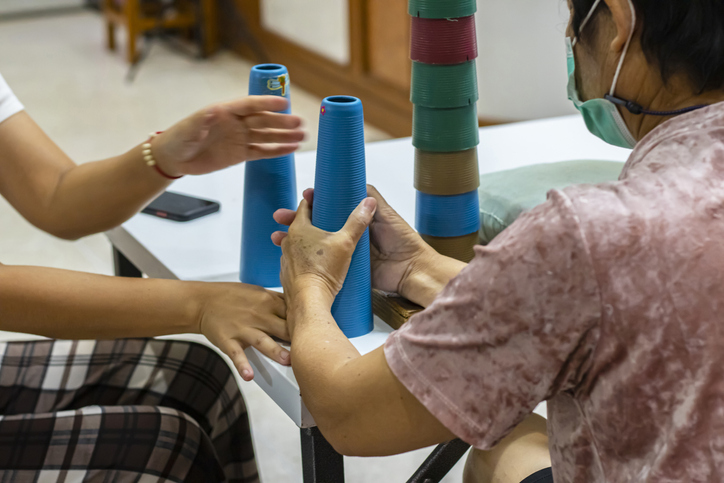Treatments
The Role of an Occupational Therapist

An occupational therapist, or OT, helps individuals maintain independence by teaching them ways to modify everyday tasks and activities that they can no longer do or have difficulty doing on their own. This could be due to aging, injury, illness, or a chronic illness.
Assessing environment and setting goals
An OT usually visits an individual’s home environment to assess their abilities and identify any changes or modifications that need to be made to make everyday living easier to manage. An OT also helps individuals set goals to achieve new ways to do things, making them feel more in control of their environment and life. If an individual has a chronic illness such as MS, lupus, or rheumatoid arthritis, they may require help with basic daily needs including, but not limited to, the following:
- Showering
- Getting dressed
- Cleaning the house
- Running errands
- Laundry
- Cooking
- Exercises to strengthen muscles and improve fine motor skills
Recommending assistive devices
If difficulties with range of motion, coordination, or fine motor skills are an issue, an occupational therapist can suggest assistive devices that can help with everyday activities.
Examples of assistive devices include, but are not limited to, the following:
- Wheelchairs, canes, walkers
- Jar openers
- Raised toilet seats
- A seated bench for the bathtub
- Grab bars installed near the toilet or in the shower
- Grabber devices (to grab unreachable items)
- Visual aids, such as magnifying eye glasses
Occupational therapists teach individuals how to conserve their energy by prioritizing daily tasks. OTs help in finding alternative ways and tools to make tasks easier, which boosts independence, self-esteem and confidence.



















